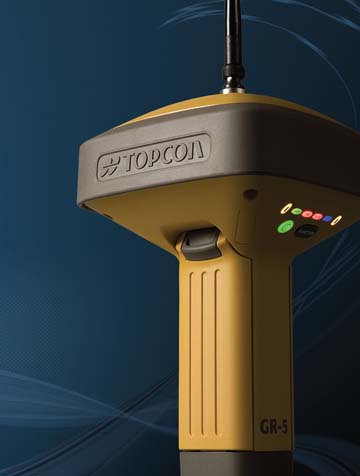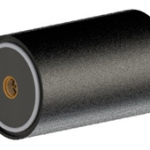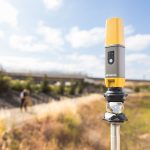 TPS GR-5
TPS GR-5Topcon Positioning Systems (TPS) has launched its new GR-5 GNSS receiver using patented Fence Antenna technology and expanded tracking-channel support.
Topcon Positioning Systems (TPS) has launched its new GR-5 GNSS receiver using patented Fence Antenna technology and expanded tracking-channel support.
Based on Topcon’s Paradigm G3 receiver technology with 216 universal channels that track GPS, GLONASS, and Galileo (GIOVE A/B) signals, as well as WAAS/EGNOS/MSAS satellite-based augmentation systems, the GR-5 also incorporates a micro-center Fence Antenna and ground plane in a magnesium I-beam housing. The GR-5 supports real-time kinematic (RTK) positioning up to a 100-hertz update rate.
The receiver/antenna unit also comes with an integrated GSM/GPRS or CDMA cellular and Bluetooth 2.0-compliant wireless communications, plus optional integrated UHF TX/RX or 915 MHz spread spectrum radio. The GR-5 is targeted at the survey, engineering, and construction application market segments.
In a paper presented at the 2009 ION GNSS 2009 conference, Dmitry Tatarnikov, GNSS Topcon’s chief GNSS antenna designer, described the company’s new Fence Antenna technology, which uses low-profile pure metallic periodic structures as patch antenna substrates to form an artificial media able to support slow-wave propagation — which the company refers to as “artificial dielectrics.”
Arranging pins in a sort of array – or “fence” — along patch edges supports an increase in the effective frequency bandwidth of the antenna and at the same time allows for use of stamping technology in manufacturing.
The Fence technology features a vertical two-patch stack that obtains a deep null in backward (down) direction of the resultant pattern, Tatarnikov said. The top patch antenna is an actual (active) antenna and the bottom antenna is a driven (anti-antenna), being excited by the top one by means of electromagnetic coupling.
For dual-frequency functionality, two sets of the two-patch stacks are combined, with the bottom set inverted and attached to the top. According to the company, the antenna design improves the tracking of signals from low-elevation satellites while enhancing multipath rejection.
The GR-5 can be combined with a variety of Topcon field controllers and controller software.





